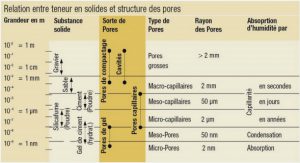WHY PUBLIC-PRIVATE PARTNERSHIPS DON’T WORK
A public-private partnership (PPP) is a contract between government and a private company under which :
• A private company finances, builds, and operates some element of a public service; and
• The concept of PPPs was not used before the 1990s, but concessions have existed for many centuries. The principle was that the private company agreed to invest its own money in return for which the state guaranteed a monopoly to the company on supplying that service in the area covered, and so the company could expect to get a return on its capital by charging users. Concessions were often used in the 19th century to develop water, gas, and electricity systems, and railways, which involved high capital investment. But they were unable to deliver the required scale of investment for universal services at affordable rates, and so were generally replaced by public ownership using public finance.
The modern version of PPPs, whereby the private company is paid by the government rather than by consumers, was invented in the UK in the 1980s, by the Thatcher government.** The introduction of neo-liberal fiscal rules limited government borrowing, but the government still wanted to be able to invest in public infrastructure. PPPs were the solution, under the heading of the private finance initiative (PFI). Although the government is committed to paying for the investment, just as if it had borrowed the money itself over a period of 25 years or more, the accounting rules allow them to be treated as private borrowing, not public borrowing – and so the money can be borrowed without breaching the fiscal rules. The policy was also attractive to the Thatcher government as it was another form of privatisation, allowing private
PPPs originated as an accounting trick, a way round the government’s own constraints on public borrowing. This remains the overwhelming attraction for governments and international institutions. Just as companies like Enron had tried to conceal their true liabilities by moving them ‘off-balance-sheet’, so governments started using PPPs as “tricks…. whereby public accounts imitate the creative accounting of some companies in the past.”
Since the collapse of Enron, these tricks have been outlawed for companies, but PPPs – based on the same principles of hiding liabilities – are enthusiastically promoted as the way forward for governments.2For the private companies involved – the banks, the builders and the service companies – they represent an extremely attractive business opportunity. A single contract gives them a flow of income for 25 years or more – usually underwritten to a great extent by the government itself. The companies can lobby politicians to ensure that governments create PPPs, and renegotiate them as necessary during the long years of the contract. From the outset, the PFI was criticised from both right and left for being far more costly than using public finance, undermining services, and a ‘scam’ to conceal real public borrowing and expenditure. It was nevertheless adopted and accelerated by subsequent UK governments, and a special unit, mainly staffed by the executives from the private sector, was created within the Treasury to act as a permanent centre inside government for the promotion of PFI projects. This has become the model for PPPs units established by many governments around the world.3The UK has used PPPs for a wide range of buildings and infrastructure – hospitals, schools, roads, rail, defence, and government offices. As neoliberal limits on government borrowing spread, so did PPPs – for example in Europe, where EU rules started to limit government borrowing to 3 per cent of GDP. New Zealand, Australia, Canada and the USA all began using PPPs as an element of privatisation policy, and as a way of balancing budgets by concealing borrowing.






